Skip over navigation
I'd like you to imagine a large square piece of rigid plastic, maybe perspex or pretend glass.
On it is marked a square made up of 6 x 6, that is 36, dots:
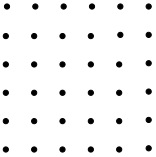
Someone marks a capital or big "F" in this way:
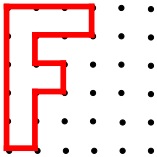
Each time start with the "F" as shown above, and in your mind find how it will look when you flip it along the blue line.
First this one:
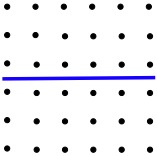

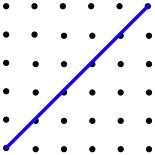
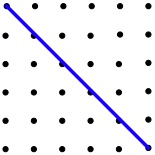
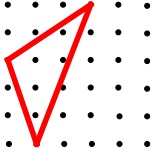
Move around the blue dots to see what happens when you flip using different lines.
Here you can move the line and try different triangles.

Or search by topic
Number and algebra
Geometry and measure
Probability and statistics
Working mathematically
Advanced mathematics
For younger learners
Flip
Age 7 to 11
Challenge Level 





I'd like you to imagine a large square piece of rigid plastic, maybe perspex or pretend glass.
On it is marked a square made up of 6 x 6, that is 36, dots:

Someone marks a capital or big "F" in this way:

You are pretending to hold this in front of you.
You are going to flip it over in front of you along imaginary lines which I've drawn in blue on the diagrams below. You could do this by imagining you are holding each end of the blue line with a hand and turning the sheet over.
Each time start with the "F" as shown above, and in your mind find how it will look when you flip it along the blue line.
First this one:

Try to describe to someone how it will now look to you.
Now try this one:

If you feel you could go further try this one:

And my last suggestion as a different way of flipping is:

How did you get on?
Talk to others about the experience.
If that's been ok. then use this next shape instead of the "F" and do the same flips.
Can you tell where the triangle will be?

Move around the blue dots to see what happens when you flip using different lines.
Here you can move the line and try different triangles.
You may also like
Little Boxes
How many different cuboids can you make when you use four CDs or DVDs? How about using five, then six?

